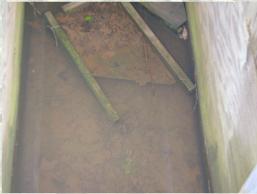Sump Pumps
Sump pumps come in all different sizes and pumping capacities. They all have the same purpose in common, to pump water out, from an unwanted area. Sump pumps are controlled by a float level switch that turns the pump on, in a high water level and off when the level is low. Sump pumps can save property from damage. If the water begins to rise in a low level area such as a basement or a walkout first floor room, by pumping the water outside.
The Collection Sump
Almost all sump pumps are placed in a well or sump container. These containers are placed below the grade level of a concrete floor. The sump well has perforated holes in the bottom of the plastic tub that allows water to enter the vessel. These plastic sumps are generally placed in a gravel bed, that allows the water to flow into the tub. This keeps the water from coming through the seams, at the walls and floors.
The Pump
Sump pumps are a self contained unit that includes both the motor and the impeller head. The pump motor is generally a 120-volt motor in a sealed plastic case to protect the motor from a water environment. You should note, that the plug is a three-prong plug for safety. It connects to the earth grounding system of the motor. The plug should never be tampered with to solve an electrical problem. If this third prong is removed, the fuse or circuit breaker may not shut down the unit in case of a motor problem. The impeller is what moves the water from the plastic sump into the discharge line and out of the area. The impeller can be made from either plastic or metal. The higher the quality, the better the material for the impeller.
The Impeller Blade
Plastic impeller blades are found in the lowest priced sump pumps. These pumps, may not be rated for a high duty cycle. The duty cycle is how many times the pump will be required to operate in a certain time period, generally rated by the hour. Metal blades will have a higher duty cycle rating and are constructed of cast steel , brass or stainless steel. Cast steel has a strong capacity as it can also pump some forms of trash through the discharge tube. These type of blades are prone to rust and corrosion and can be shorter lived of the other two metal types. The brass blade has a good resistance to corrosion but is a softer material. While it has a long life it can be damaged from trash that may enter the pump system, such as sand or gravel. Stainless steel blades are the heaviest duty of the four choices for impellers and perhaps the most expensive. They have the property of being corrosion resistant and very capable of pumping sand and gravel particles through the discharge pipe.
Check Valves
Check valves are also included on the discharge side of the pump. These valves prevent the sump well from filling up due to a back flow. This backflow can occur when the discharge end of the pipe is much higher than the pumps inlet. When the pump shuts off, water can flow backwards in the discharge pipe from the higher outlet end and back into the sump well.


